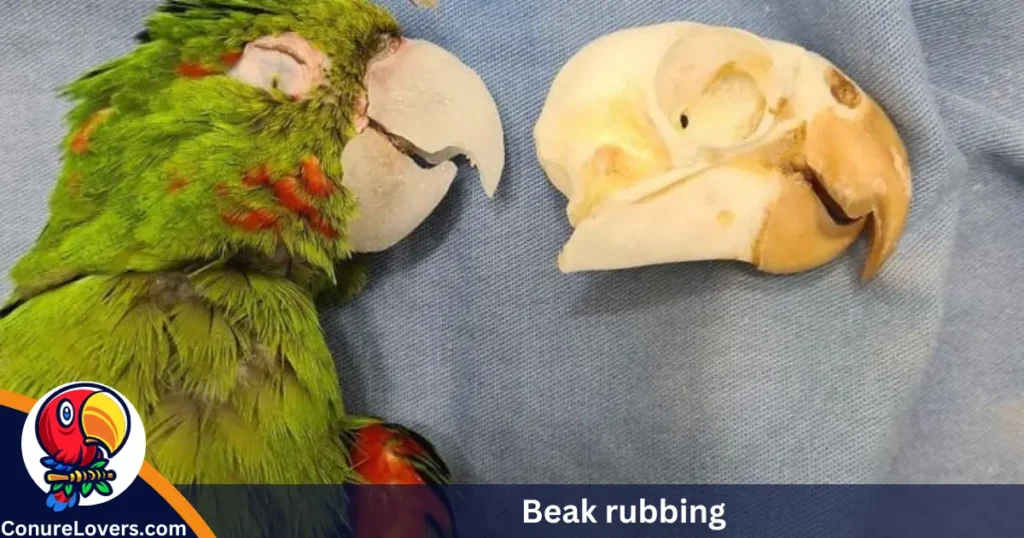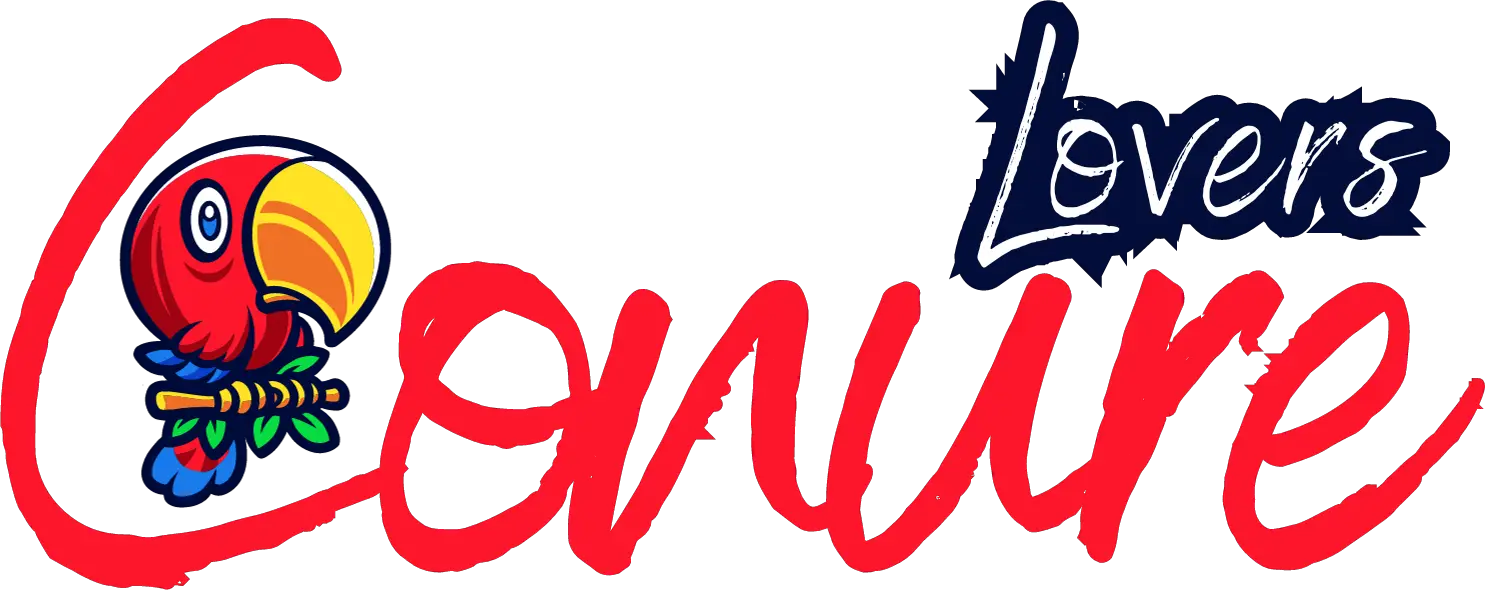These Signs show that Your Parrot Trusts and Like You. Enjoyable sounds such as chirping, singing, and talking from your parrot usually indicate a sense of trust and affection towards you.
Awesome news on welcoming a new parrot into your life! Get ready for a fantastic friendship journey. Now, let’s dive into building and keeping that trust.
Parrots are super smart and affectionate, but building trust takes time. As a fresh parrot owner, your bird’s actions might puzzle you. It’s normal to wonder if your feathered friend trusts you or if there’s a bit of wariness going on. No worries, though! There are clear signs that show your parrot trusts you, and you’ll get the hang of them as time flies by.
Signs your Parrot trusts you and likes you
1. Cuddling
Even though parrots are loveable birds that enjoy being near their owners, they need time to feel totally comfy. So, when your parrot starts getting cozy by perching on your arm or shoulder and isn’t shy about snuggling up, that’s a clear sign of trust.
At times, they might nuzzle into your hair or clothes, or even scoot closer to your hand just to be near you. When these things happen, it’s a super clear sign that your bird really likes you.
2. Preening themselves
It’s totally natural for parrots to engage in preening; it’s their way of keeping those feathers in top-notch condition. If your parrot starts preening while you’re around, that’s a clear sign it trusts you. They don’t preen when they feel unsafe.
When a parrot feels uneasy, you’ll notice it perched upright and looking super alert instead of getting into a preening session. That’s their way of gearing up for a potential fight or flight.
3. Preening you
This is kinda like cuddling with your parrot. When your feathered friend trusts you, it goes beyond preening itself – it starts preening you too. You might feel gentle nuzzles against your hand, the hem of your clothes, and sometimes even your ears. Your parrot’s beak may run along your skin or hair. It’s like your bird wants to groom you and sees you as part of its close crew.
In the wild, birds that are tight buddies do this thing called allopreening, where they help groom each other’s feathers. So, if your parrot is giving you the spa treatment, that’s a super clear sign it totally trusts you and wants to keep your “feathers” in top shape too!
4. Flapping wings
When a parrot flaps its wings, there could be a bunch of reasons. Young birds often do it while staying put, kind of like a workout to build wing muscles.
But, if your parrot flaps its wings and chirps when it sees you, it’s likely looking for your attention or expressing joy. This combo is a clear sign of trust, showing that your feathered friend likes you and is eager to engage with you.
5. Wagging tail
When a parrot wags its tail, it’s like a bird version of excitement and happiness, similar to how dogs wag their tails. Unlike dogs, though, parrots don’t wag their tails back and forth for a long time. It’s more of a quick shake of the tail feathers for a couple of seconds.
Among the many signs that your bird trusts you, a wagging tail is a clear signal that your parrot is pumped to see you and is ready for some interaction.
Here’s the catch: sometimes, parrots also wag their tail feathers when they’re a bit annoyed. So, it’s key to look out for other signs of trust, along with tail wagging, to figure out if your feathered friend is in a positive mood or not.
6. Bowing head
In the parrot world, a bowed head is like a trust and vulnerability combo. When your bird bows, it’s exposing the back of its head and neck to you. Sometimes, you’ll notice closed or half-closed eyelids – a clear sign it’s ready for some relaxing neck scratches from you. When your parrot bows its head, it’s basically saying, “I trust you, even in my vulnerable moments.”
Now, when this happens, you can try gently stroking the feathers in the opposite direction of their growth. It’s like giving your bird a little feather massage, and they’ll totally appreciate you for it!
7. Eye pinning

Eye pinning is when parrots quickly change the size of their pupils – enlarging and making them smaller. This phenomenon reveals their feelings and can indicate fear, excitement, or love, depending on the situation. Keep an eye on species like Indian ringneck parakeets, African greys, and parrotlets; their pupils often shift noticeably.
But here’s the thing: don’t just focus on the eyes alone. Eye pinning might also signal readiness to attack! Watch out for other defensive signs like raised neck feathers, growling, or lunging with its beak. That’s a clear sign your bird isn’t happy.
On the bright side, if your feathered friend makes gentle cooing sounds with a relaxed posture while eye pinning, it’s a good sign. It means your bird is happy and enjoying its time with you.
Read Also: Why Does My Bird Love Sitting On My Shoulder?
8. Hanging upside down
Usually, parrots don’t make a habit of hanging upside down. There’s an exception though – the hanging parrot, which can even catch some Zs while upside down. For most other parrots, being upside down is a vulnerable position, and they typically do it when they’re in a playful and goofy mood.
So, if you catch your parrot climbing around and doing the topsy-turvy thing when you’re nearby, take it as an adorable sign that your bird trusts you and is super excited to play!
9. Lying on back
Certain parrots, like caiques and conures, have a quirky habit of lying on their backs while playing with you or a toy. Interestingly, some baby conures even snooze in this position, though the reason remains a mystery. When a bird is on its back, it’s in a highly vulnerable and exposed state. Most parrots won’t flaunt this move unless they trust you wholeheartedly and believe you won’t cause harm.
So, when your parrot not only allows you to witness but also approach it while it’s lying on its back, it’s a clear sign of immense trust.
Keep in mind, though, it varies with each parrot’s personality. Due to the high vulnerability, some parrots might not be up for lying on their backs, even if they trust you deeply. So, don’t feel disheartened if your parrot prefers to skip this acrobatic display!
10. Beak grinding
If you hear a strange crunching sound from your parrot and see it moving its lower beak against the upper one without eating, it’s likely beak grinding. First-time bird owners might get a bit worried about this unusual noise, but more often than not, there’s nothing to fret about!
Parrots tend to grind their beaks before falling asleep or when they’re feeling relaxed and sleepy. You might notice them gradually closing their eyes while they do it. If your parrot grinds its beak in your presence, take it as a sign that it’s in relaxation mode – definitely one of the signs your bird trusts you.
11. Beak rubbing

When parrots feel safe and comfy, they show affection by rubbing their beaks against people. It looks like they’re cleaning their beaks, and they might do it on your shirt or skin. Some say it’s their way of marking you as their own. So, if your parrot is giving you beak rubs, it means it likes you and wants you all for itself!
12. Reaching out to you with its beak
Caution: Watch out when your parrot reaches out with its beak! There could be various reasons behind this behavior. If you’ve recently got the bird or it’s feeling uneasy or stressed, it might be a form of self-defense—a warning for you to keep your distance.
So, be cautious if that seems to be the case. On the flip side, if the bird is rested, well-fed, and in a safe environment, or if it wants to play with you, reaching out with its beak can be a gesture of trust—an unmistakable sign that your bird trusts you.
13. Nibbling you gently with its beak
While biting is a big no-no and signals that your bird wants you to back off, gentle nibbling and nipping can be friendly and fun. This behavior may vary between baby or young birds and adult birds. Young birds are often curious about the world and may express this through “beaking” or gentle nibbles. It’s harmless—they just want to explore your skin and test boundaries a bit.
For most adult birds, gentle nibbling on your skin can be a form of preening (as mentioned before) or a playful gesture, showing that your bird trusts and likes you. If the nibbling starts to get harder, it might escalate into a bite. If you sense the nibbling is getting stronger, gently withdraw your hand and calmly tell your bird a firm (but not fierce) “no.”
14. Relaxed posture
Keeping it simple! If your bird trusts you, its posture will be relaxed and at ease, unless something in the situation or environment is bothering it. When your parrot is chill around you, it’s a clear sign of trust.
A relaxed parrot is often playing, nibbling, or preening, with feathers either in “neutral” or fluffy mode. It might grind its beak or even close one or both eyes.
During relaxation time, the parrot might stand on one foot, tucking the other into its feathers for a little rest. On the flip side, a tense parrot tends to have wide-open, unblinking eyes, feathers pressed flat against its skin (making it look skinny), and stands on both feet.
15. Closing one eye (usually the one towards you)

When a parrot is relaxing, it might close both eyes or just one. Sometimes, it’s not obvious because the parrot may be sitting with one side of its face toward you and the other side away from you. If you notice your parrot closing only one eye, check which eye is facing toward you.
Closing the eye facing you is a clear sign your parrot trusts you. It means there’s nothing about you that it needs to be cautious of. If the eye facing away from you is open, it’s keeping an eye out for potential signs of danger in its surroundings.
16. Fluffed feathers
Understanding feather fluffiness can be a bit tricky since it’s quite contextual. Fluffed feathers might signal that the bird is feeling threatened, angry, and potentially aggressive. On the flip side, it can also indicate friendliness and affection.
With time and observation, you’ll get the hang of figuring out whether it’s a sign of caution or a sign that your feathered friend is in a happy, affectionate mood.
17. Dancing or showing excitement
One of the most common signs that your bird trusts you is when it shows excitement by moving its head, wings, and feet around, almost like it’s dancing. This behavior indicates that the bird is happy around you and has developed a level of trust.
18. Regurgitation (or the “head wobble”)
Regurgitation might sound a bit gross, but for a bird, it’s a way of expressing deep affection. Most commonly, a bird regurgitates its food to feed its young ones. So, if your parrot does this to you, it’s not just trusting you—it loves you a lot and sees you as a mate. In the bird world, regurgitating is like the highest compliment they can give!
However, it’s generally not ideal to encourage this behavior too much. It could lead to health issues or excessive bonding with humans.
19. Showing mating display toward you
When a parrot puts on a display for a potential mate, it’s at its most comfortable and is trying to attract a mate. So, if your parrot lets you witness its mating display, it’s the ultimate sign of trust and shows that the bird is highly comfortable with you.
Different birds have various types of mating displays, so knowing the specific ones your bird makes can help you recognize mating behavior!
20. Following you around

When your parrot follows you around, it’s a clear sign that the bird is comfortable and feels completely safe with you. It wants to be close to you frequently, indicating a high level of trust. This behavior suggests that the bird prefers your company the most. While following you, it might be curious, observing your actions to understand what you’re up to. Essentially, it means the bird holds you dear, trusts you, and wants to be part of your daily activities.
21. Calling out for you
In the wild, parrots often call out to mates and flock members, a behavior known as “**contact calling**,” to share their location and well-being. Interestingly, they carry this instinct home, considering you part of their flock. This behavior indicates that they trust, like, and accept you as family.
When your parrot calls out for you, it’s expressing a desire to be with you and to ensure you know its location, whether you’re close or far away. Responding with whistles or calls can reassure them, fostering a stronger desire to be with you!
22. Imitating you
Parrots are really smart birds, and they love to imitate. If your parrot copies you, it’s showing that it wants to be part of your world and everything you’re up to.
Think of it as a sweet form of flattery – your parrot imitating you is its way of getting closer, expressing adoration and trust.
23. Flying to you
Parrots choose to fly to those they trust and feel close to. In the wild, they fly away from danger and towards safety. So, when your parrot consistently flies close around you and comes to you willingly, even without calling, it signals trust and a feeling of complete safety. Many bird owners have taught their parrots to “recall,” flying back to them, by building up this trust.
Sometimes, they may fly to you when you walk away because they are curious about what you’re doing or where you’re going. Parrots are naturally inquisitive creatures!
| Signs Your Parrot Trusts and Likes You |
| 1. Cuddling |
| 2. Preening themselves |
| 3. Preening you |
| 4. Flapping wings |
| 5. Wagging tail |
| 6. Bowing head |
| 7. Eye pinning |
| 8. Hanging upside down |
| 9. Lying on back |
| 10. Beak grinding |
| 11. Beak rubbing |
| 12. Reaching out to you with its beak |
| 13. Nibbling you gently with its beak |
| 14. Relaxed posture |
| 15. Closing one eye (usually the one towards you) |
| 16. Fluffed feathers |
| 17. Dancing or showing excitement |
| 18. Regurgitation (or the “head wobble”) |
| 19. Showing mating display toward you |
| 20. Following you around |
| 21. Calling out for you |
| 22. Imitating you |
| 23. Flying to you |
A Final Note
So, these were the various signs your parrot trusts you, and now, learning about them, you’ll know better how to tell if your parrot is comfortable around you or if it still needs a little time. Here are some of the main things to remember:
– If the parrot follows you around, imitates you, and watches what you’re doing often, it wants to be with you and trusts you a lot.
– Be careful, especially at the beginning when you haven’t bonded with the bird very well. If it comes close with its beak out, it may try to nip in self-defense. Pushing boundaries further could either cause the bird to run away or attack. Gauge its mood and the current situation before encouraging it.
– Observing a combination of different body language signs may be necessary to interpret a parrot’s body language in many of the situations mentioned above.
– Parrots are excellent, rewarding companions to have around, but effort and patience are required on our part to learn about them and to build up familiarity. Don’t worry if your parrot takes some time to trust you completely—be patient, show it some love, and it will ultimately trust you!

Matthew Porter here, your Conure Care Companion at “Conure Lovers.” Together, let’s build a harmonious and joyful space for your feathered friend. I’m here to make conure care easy and enjoyable!












